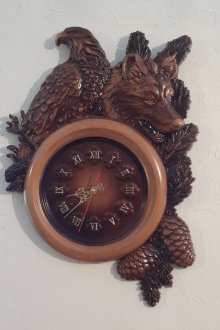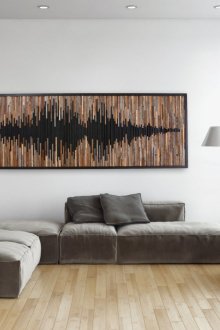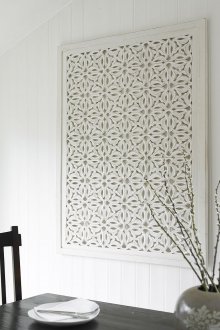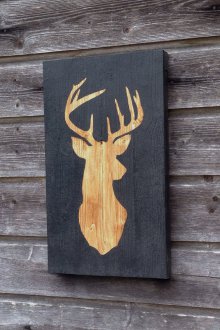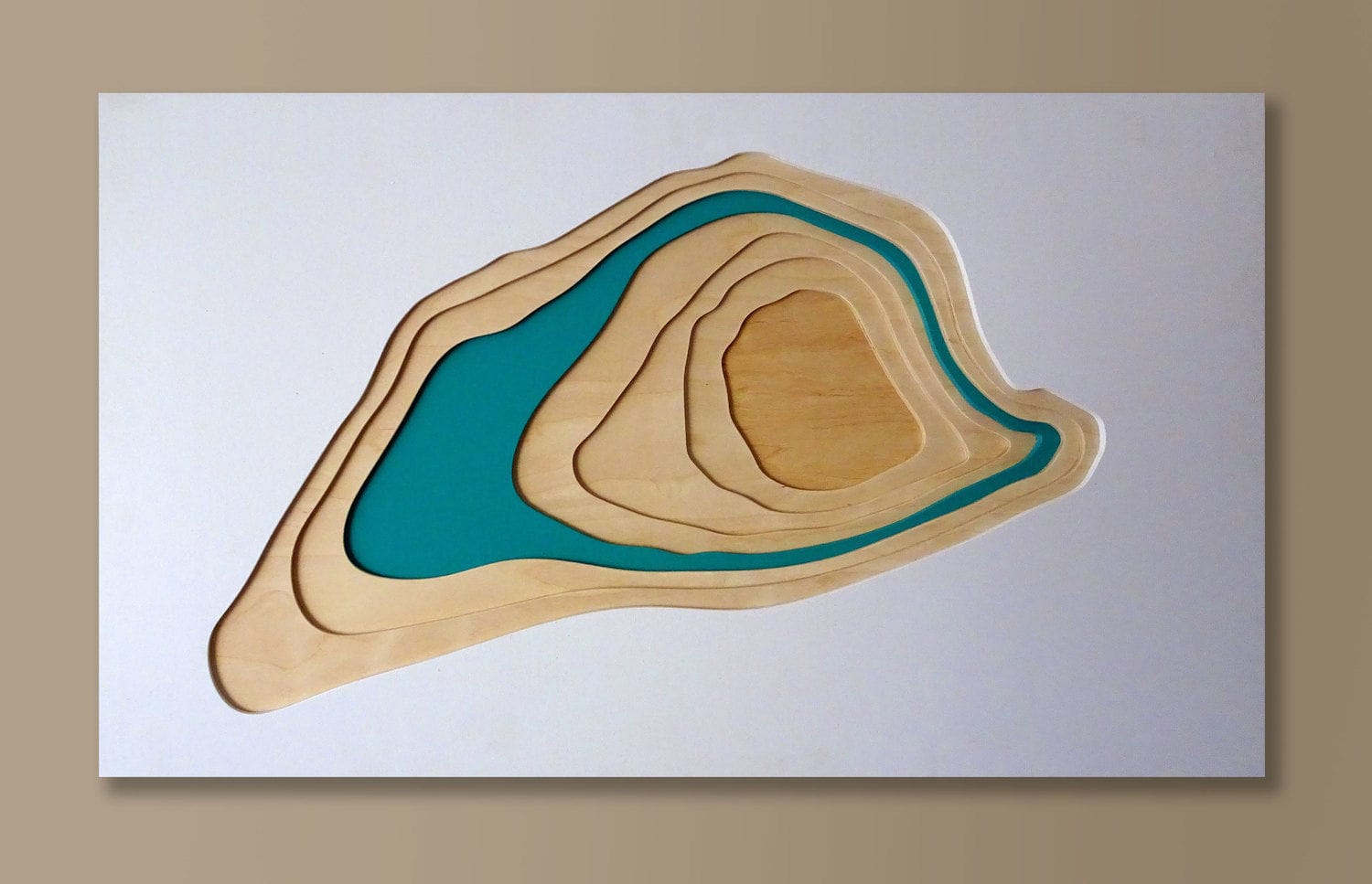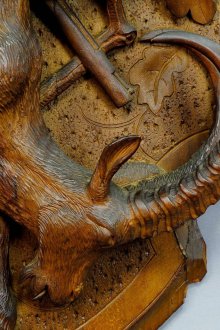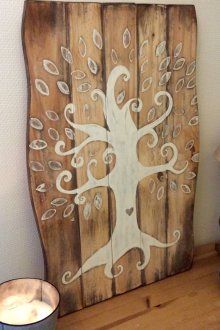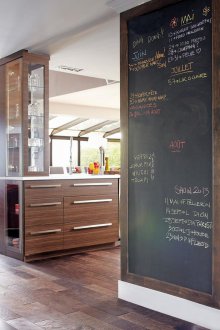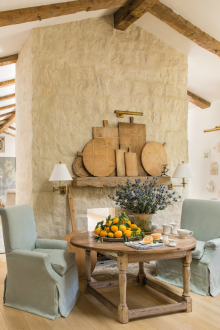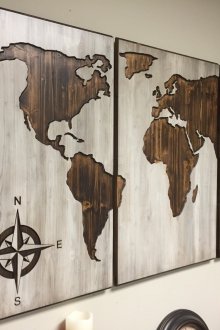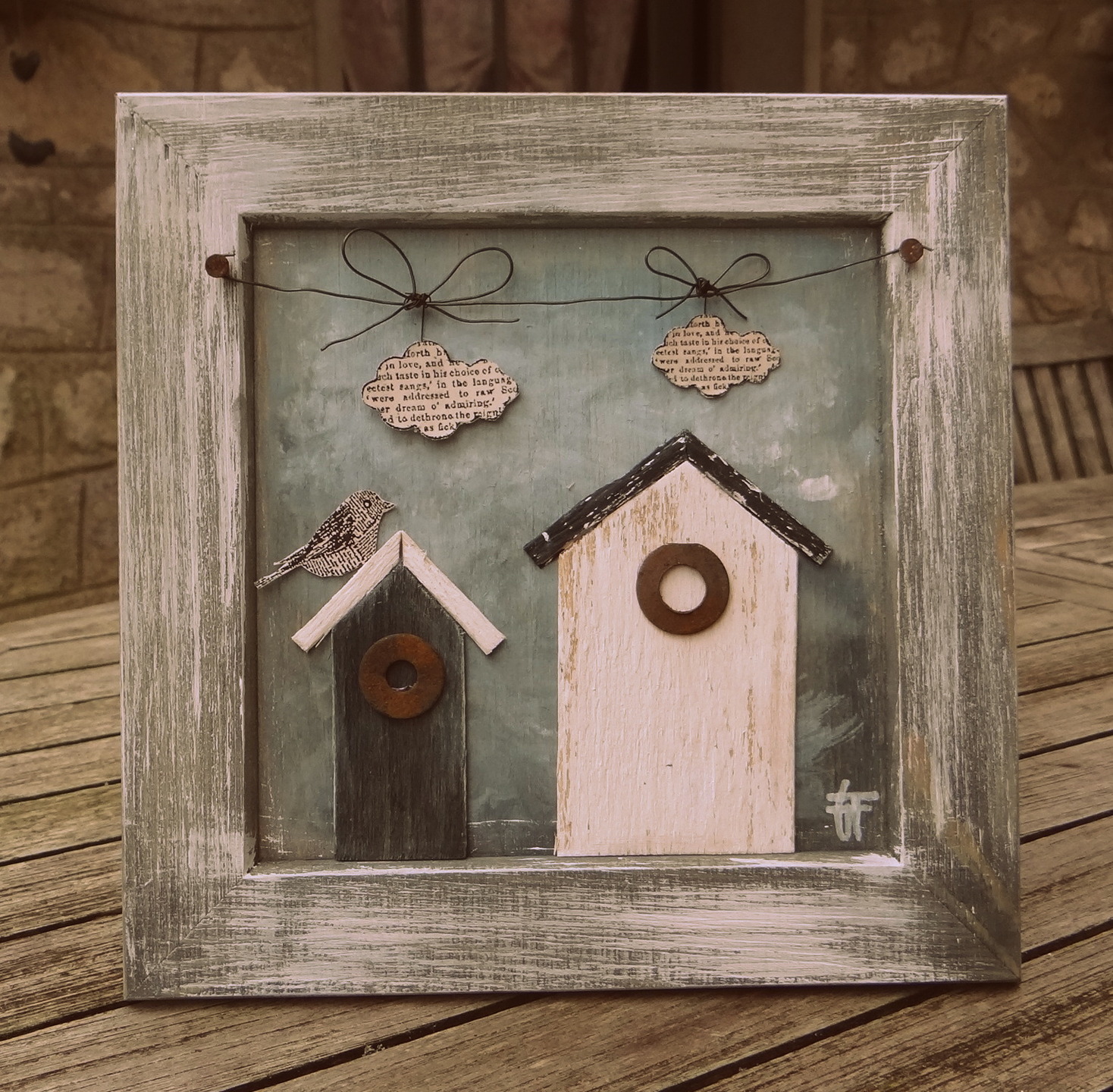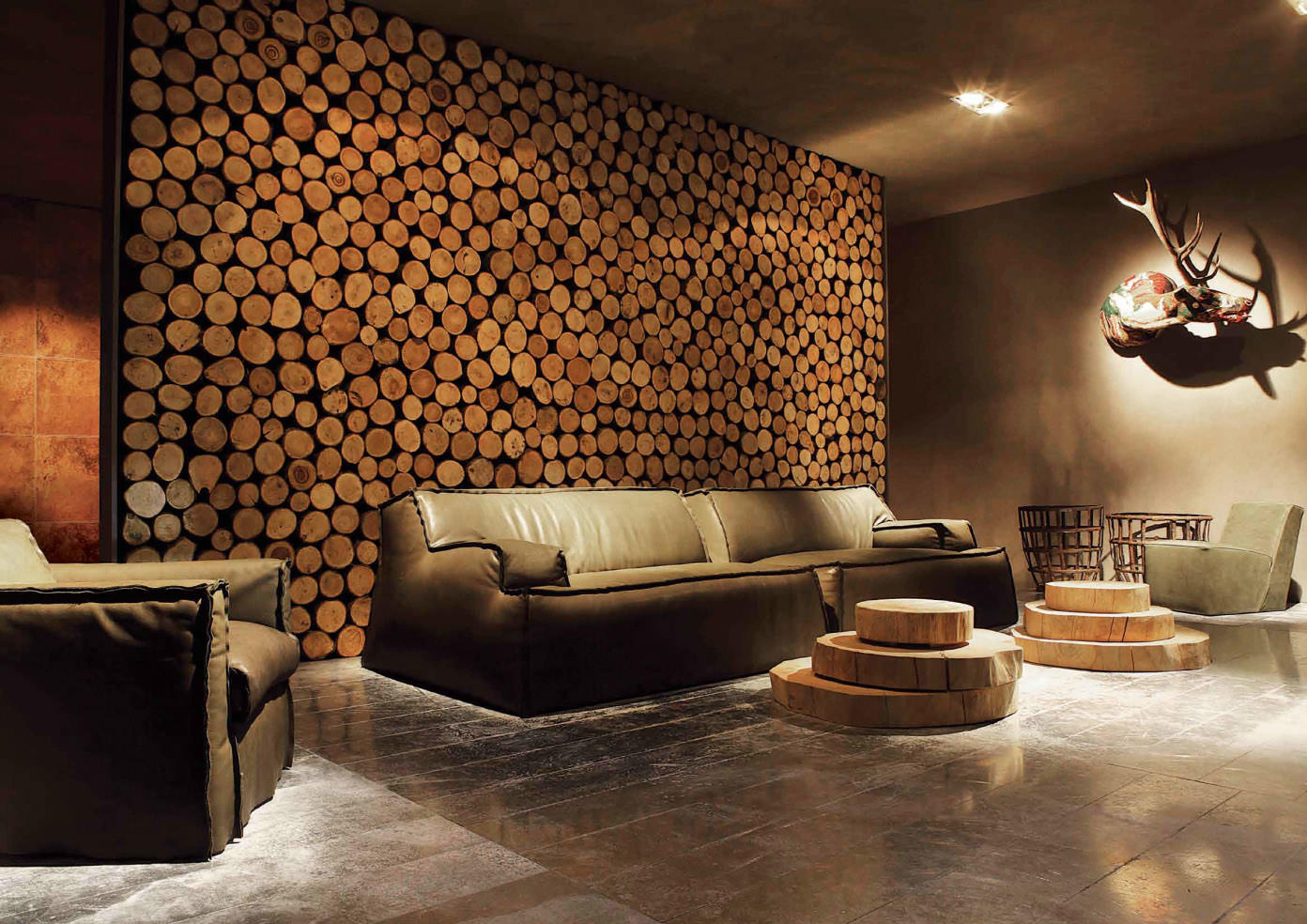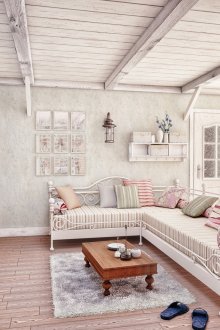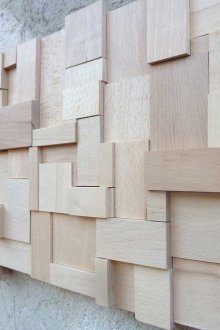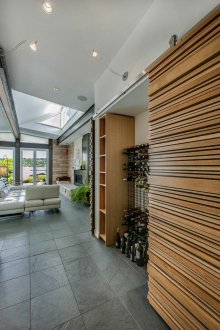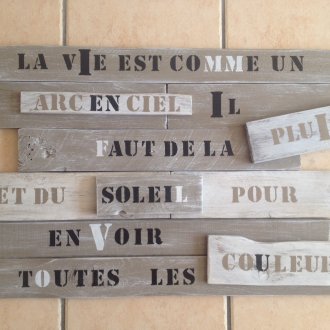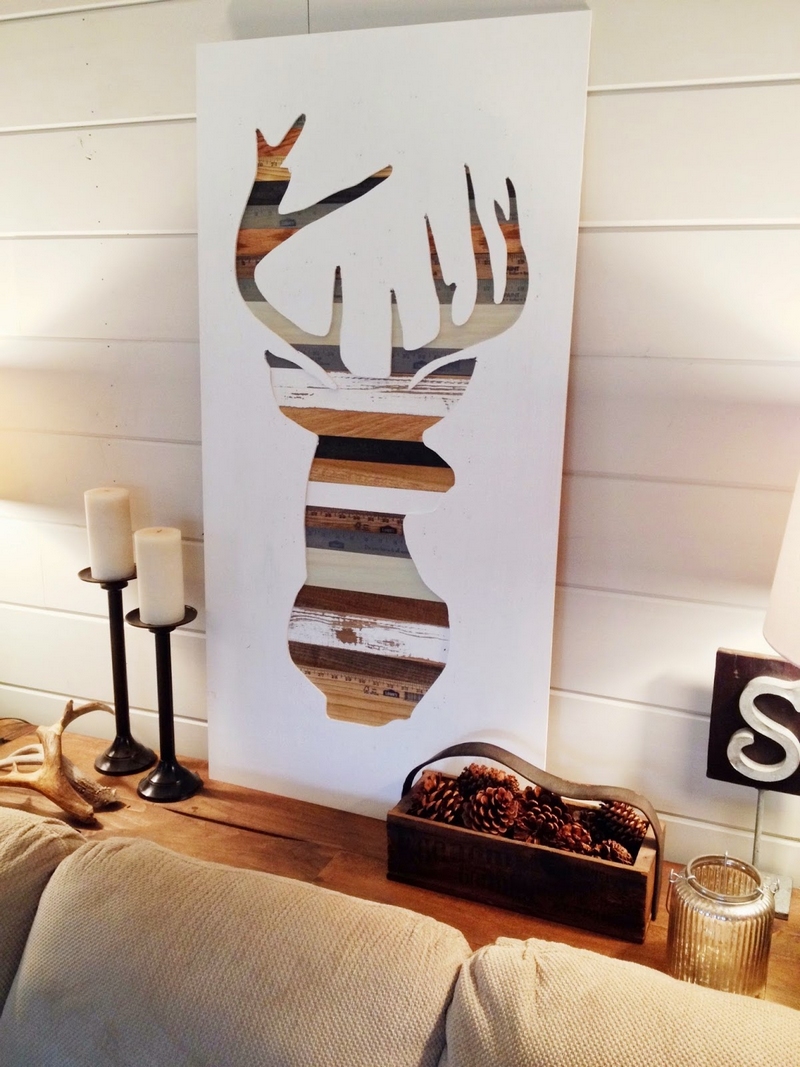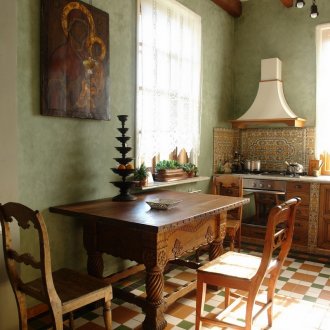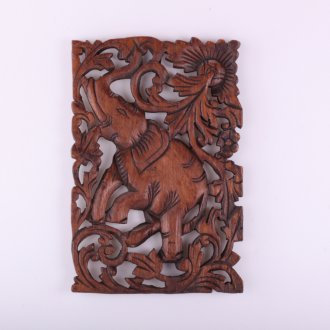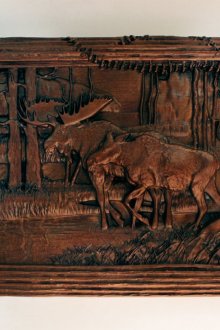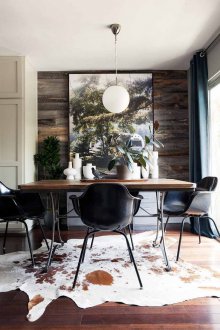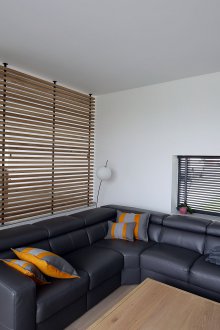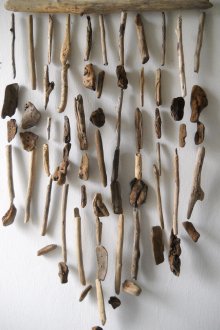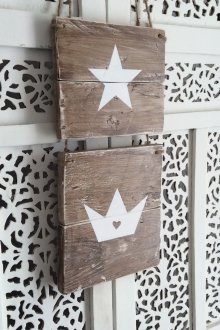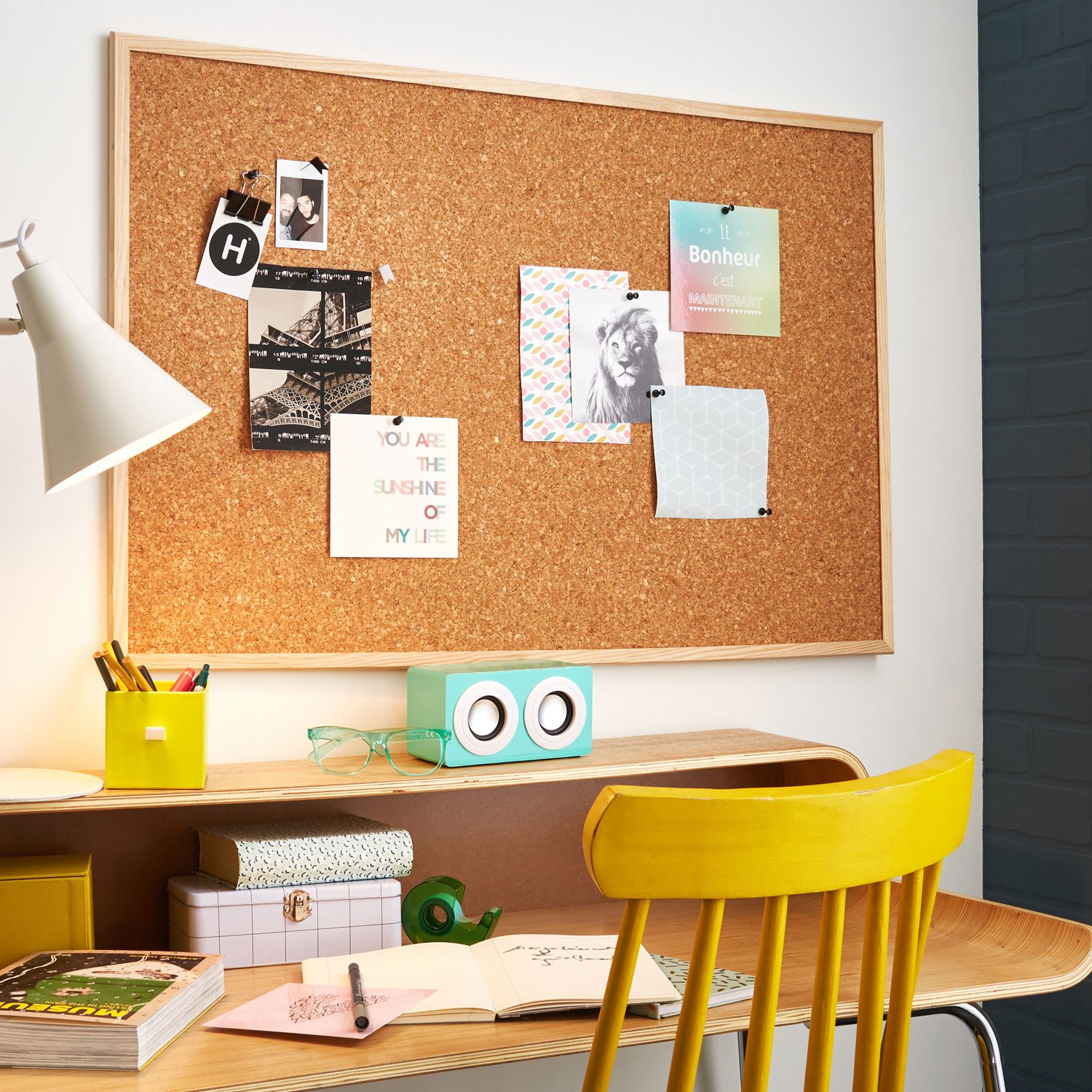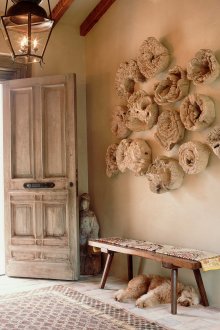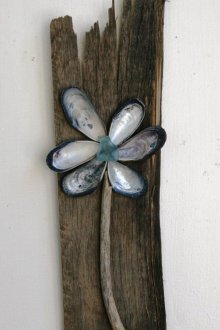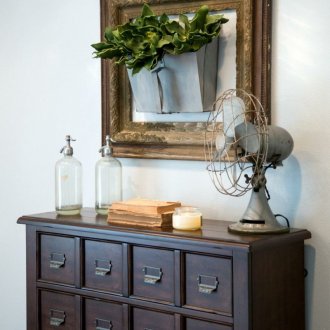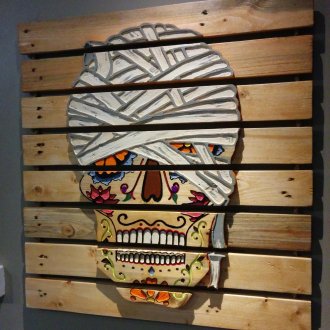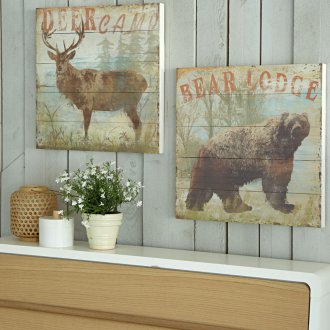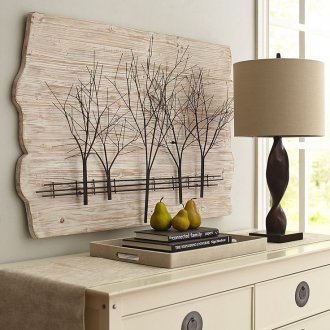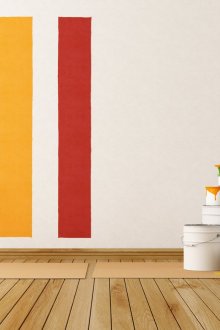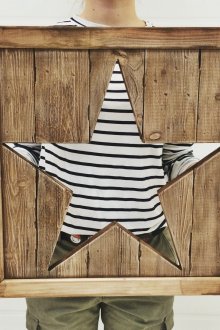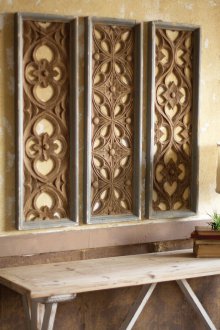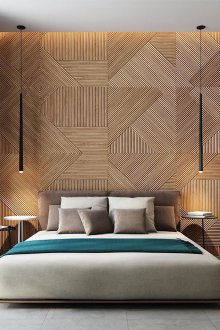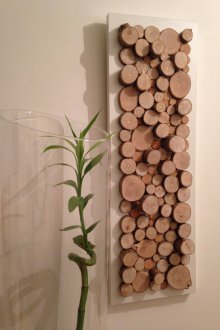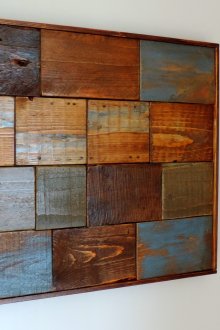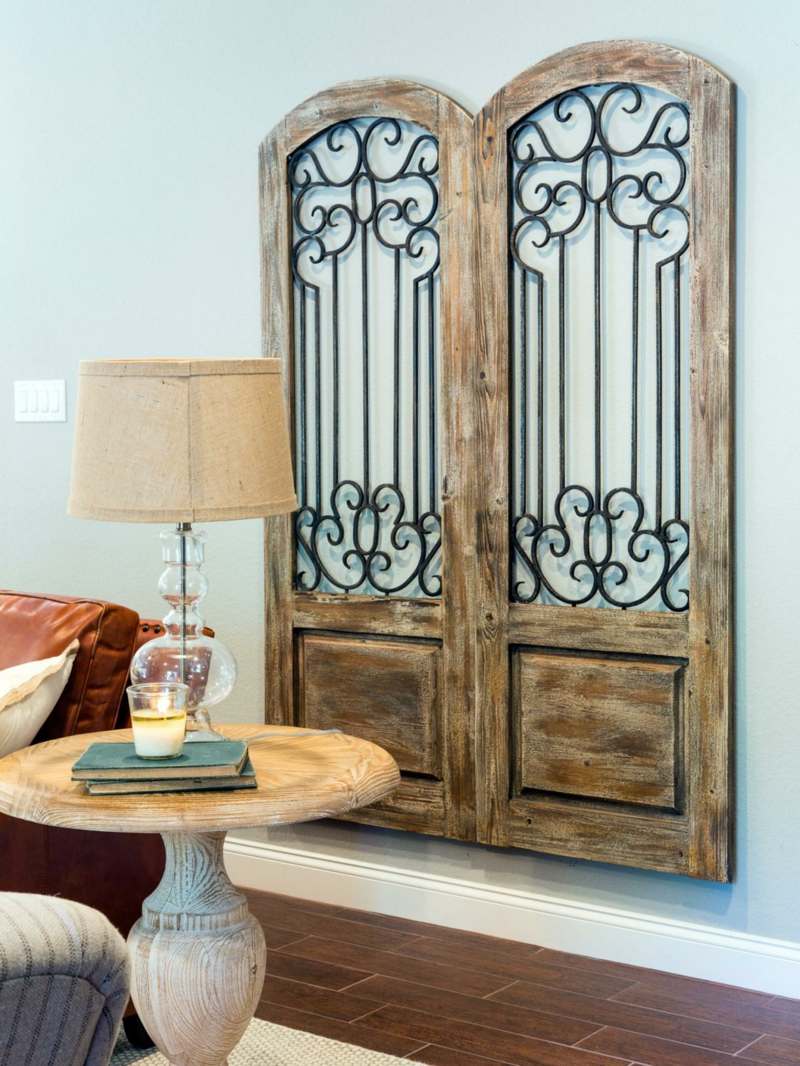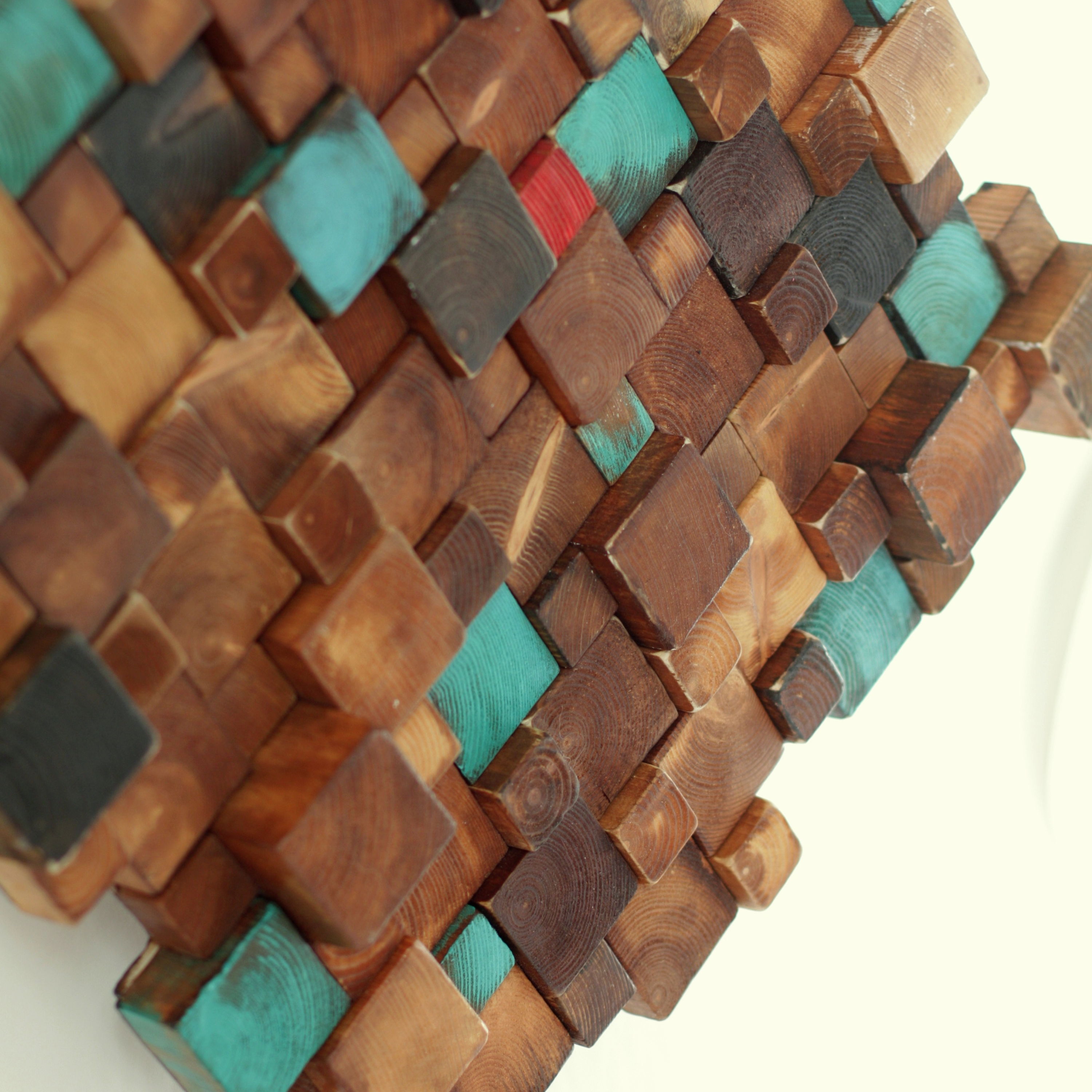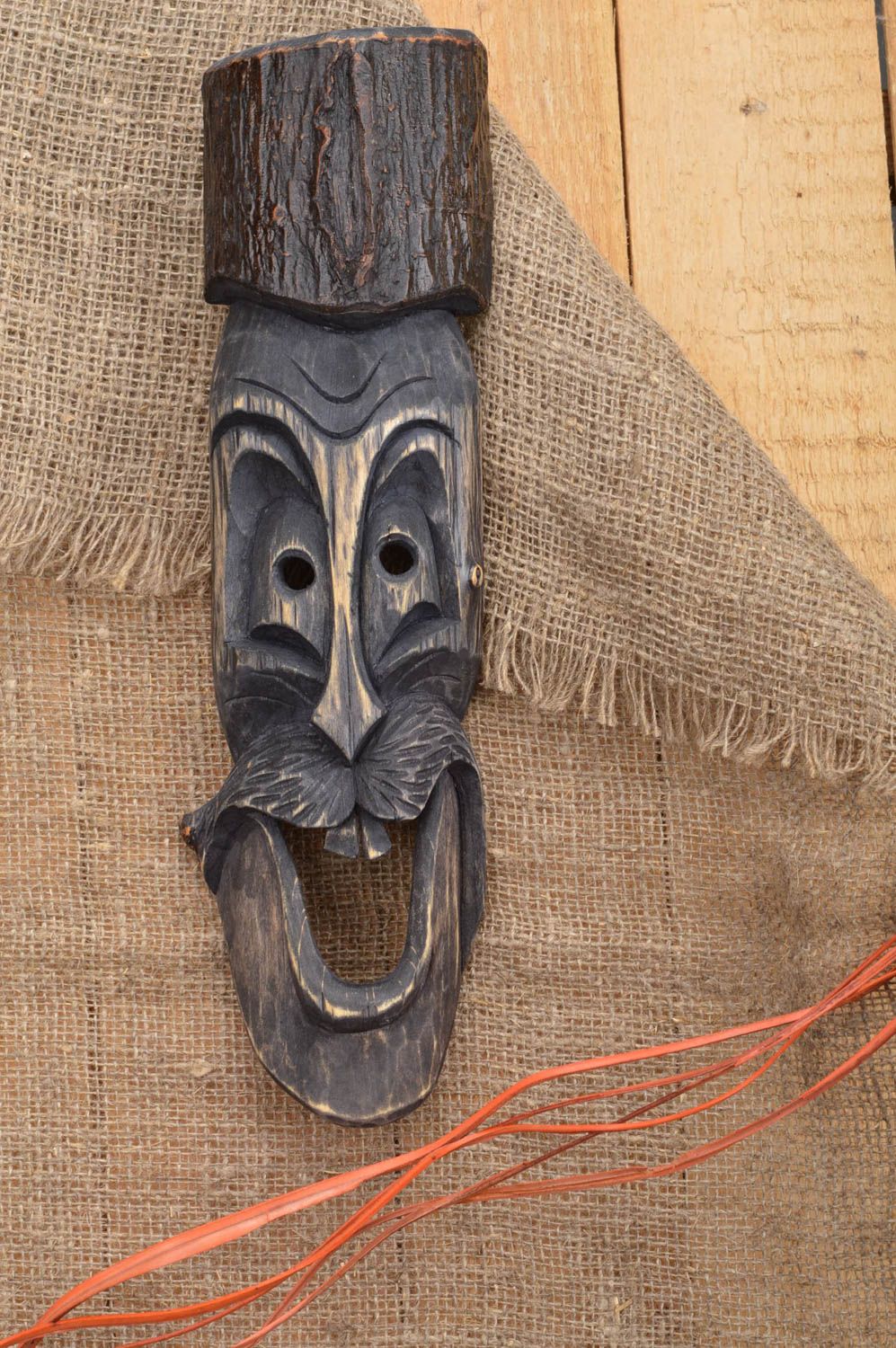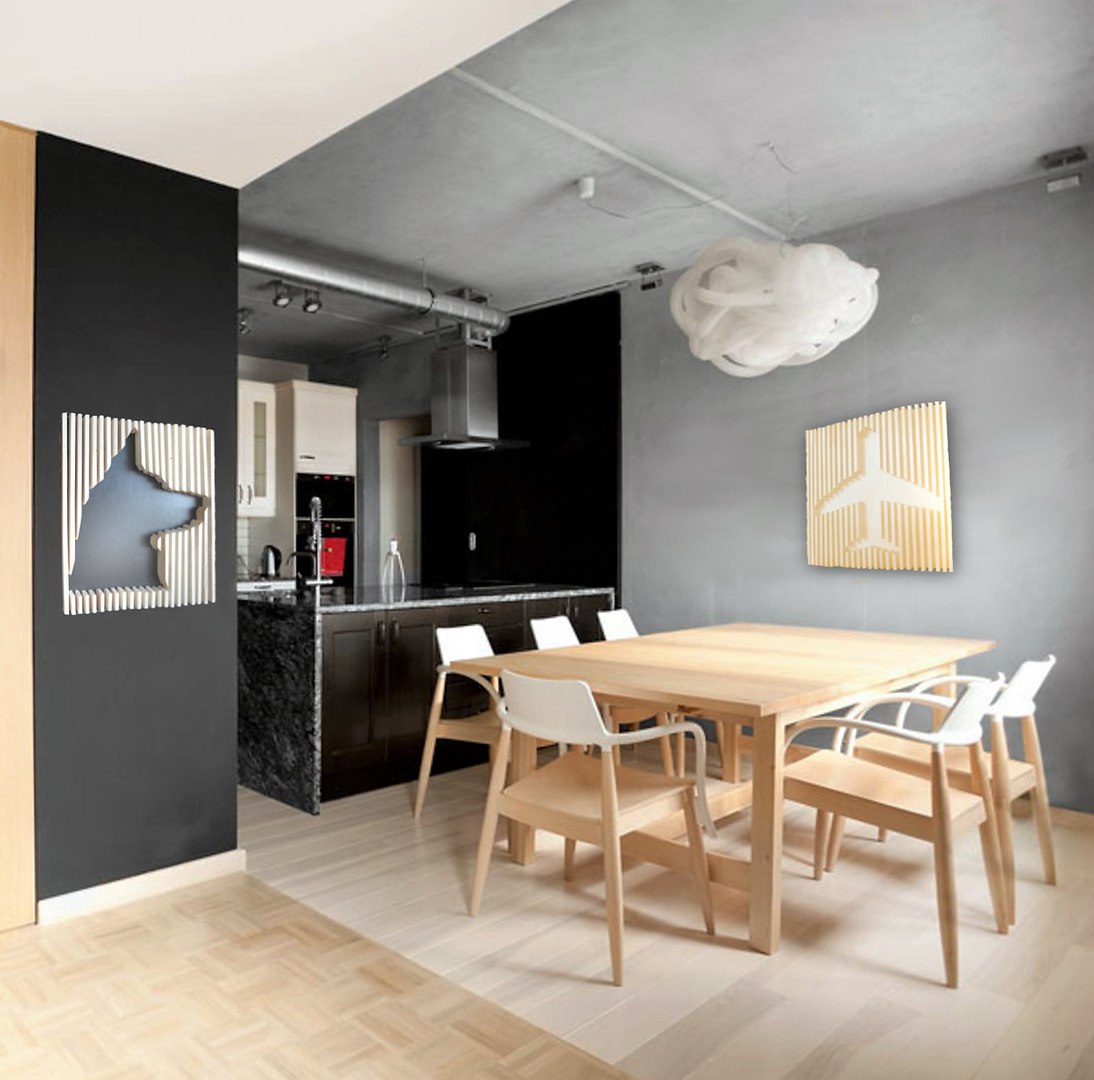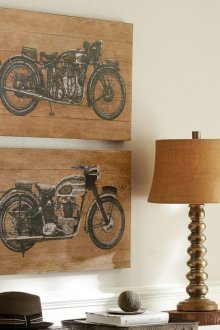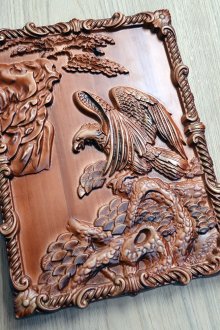A decorative panel from a tree - grace of forms (55 photos)
Content
The tradition of decorating the walls of rooms with decorative panels made of wood has come into modern interior design from centuries ago. Presumably, at first it was customary to hang images of charms or talismans on the wall of the dwelling, bringing prosperity to the house and good luck in business.
Today, wood typesetting or carved panels, as a rule, perform purely aesthetic functions, although advertising and informational products are also quite popular.
Wood panel: types of execution
Carved embossed
It is carried out in the bas-relief technique, where the image is formed by convex elements. The image details, partially hidden under others, are often made slightly reduced or performed flatter. This creates an additional bulk effect. This technique is especially rich in the possibilities of creating various paintings and inscriptions.
Embossed wall panels can represent real pictures: still lifes, landscapes, everyday scenes, etc. In this case, they most often have the correct shape - rectangular, round, oval.
The panels made in the form of any objects or living creatures, for example, in the form of a bird, fish, a basket with mushrooms, a bath tub with a broom, and a musical instrument have an informal and original appearance. Usually they are carried out in a certain theme, corresponding to the purpose of the room (kitchen, hall of a sauna or bathhouse, club hall, etc.).
Carved openwork
Wood carving is also used here, but instead of convex elements, there are curly slits outlining the details of the image. Such panels usually have a relatively simple pattern and curved edges, they are lighter, but also more fragile. Openwork wooden panel gives visual lightness to the interior, looks particularly elegant and elegant.
Stacked panel
Stacked panel is a technologically very complex piece of decor. This is a picture made of many details of various shapes and colors. Details are carefully adjusted so that there are no gaps, glued to the base and after completion of the set are covered with a layer of varnish. Perhaps the most expensive and rare option.
Panel from wood cuts based
An easy-to-use way to give the room a cozy and elegant look. Such a product is easy to make from wood with your own hands, you just need to show a little imagination and patience. It consists in the manufacture of such a panel by gluing on the basis of sawn wood dies, specially processed in a special way - round, less often rectangular saw cuts of a tree trunk. Dies can have different diameters, different shades - this depends on the type of wood and the thickness of the trunk.
Flat thread
This technique consists of cutting a pattern on a flat surface. Shallow dihedral recesses outline the contours of the picture, and the surface can have a natural color or be painted - then the contours will also be highlighted in color.
In addition to these distinct varieties, there are also combined species, for example, products combining a relief image and openwork edges, or carved pictures bordered and supplemented with wood saw cuts.
The natural beauty of the tree
The attractiveness of the wood panel is in the tangible spirit of solidity and tradition that they add to the interior. Both the relief and openwork panel with a complex delicate pattern in antique or oriental spirit, and a simple rectangle lined with smooth saw cuts give the room elegance, naturalness and comfort.
When ordering a panel or choosing a drawing for production, it is important to consider their compliance with the style of the room and the color scheme.
The performance technique also plays a significant role: a flat-grooved thread, even in the thinnest version, looks more modest than openwork or embossed, therefore it is more appropriate in simple minimalist interiors. And a product with a delicate openwork pattern or a primitive decor of a panel made of saw cuts can approach a room in a hi-tech style.
Wood compares favorably with most materials with its universal compatibility with various styles of decor, not even inferior to metal. Wooden jewelry is light enough to be placed on partitions, and not just strong load-bearing walls, which gives more room for design ideas.
Disadvantages of wood panels and precautions for use
Decorate the premises with wooden products should be subject to certain conditions.
Do not use openwork or typeset panels in rooms with high humidity and significant changes in temperature and humidity conditions. Yes, and other types of wooden decorative products should be protected from excessive moisture, as a tree, even soaked with special preservative compounds, can begin to crack, warp, lose an even shade and smoothness of the coating. So, for example, in the bath with a wooden panel you can decorate the corridor or relaxation room, but not the steam room.
It is also undesirable to place such decorations where they will be constantly exposed to direct sunlight. Radiation will quickly make the natural color of the wood dull, and the dyes used to emphasize the texture are most often not very resistant to ultraviolet light.
What pictures for a wooden panel are the most relevant?
The choice of the theme of the picture depends to a large extent on the place where the panel will be placed. If in the kitchen images of products and utensils are especially appropriate, then for the children's room images of cute animals and birds, fabulous landscapes, stylized floral drawings are better.
For an office or living room, you can choose an image of a landscape, architectural monument, historical event. In general, the most universal can be considered drawings with natural and landscape themes, as well as geometric ornaments.
Panel signs bearing the inscription and drawing corresponding to its theme remain popular. They are used for baths and saunas, clubs and cafes, restaurants, shops and even official institutions.
Recommendations for those who plan to make panels of wood with their own hands
Only carefully dried wood should be used for manufacturing. Dice and boards are boiled in linseed oil or salt solution, calcined in heated salt or sand.
For carving, boards without knots should be chosen - they can fall out during processing and disrupt the pattern.
The surfaces of the panels should be as smooth as possible, otherwise dust and other contaminants will quickly begin to accumulate in the roughness. This is especially important for products designed to decorate the kitchen, since there, in addition to dust, fatty kitchen fumes also settle.
Before you learn how to make a panel, you should decide what style it should be, how to look: simple or elegant, massive or visually light, with a pronounced texture of wood or painted in a bright saturated color.
